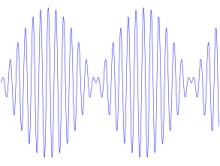Les baladeurs MP3 d'aujourd'hui ont envoyé le Walkman au rayon des antiquités: il est maintenant possible d'écouter de la musique de bonne qualité pendant des heures et à des volumes de son élevés. Souvent trop élevés.
Et les spécialistes sont de plus en plus inquiets des conséquences néfastes pour l'audition des adolescents avec l'apparition de plus en plus précoce de baisse sensible de l'audition, que certains appellent même une «épidémie de troubles auditifs».
Un adolescent sur quatre est à risque d'une perte d'audition résultant directement de ses habitudes d'écoute avec son baladeur, affirme ainsi le Pr Chava Muchnik, de la Tel Aviv University au terme de son étude, publiée dans l'International Journal of Audiology.
Près de 289 adolescents, entre 13 et 17 ans, ont participé à l'étude. Ils ont été interrogés sur leurs habitudes d'écoute avec leur iPod ou autre baladeur MP3. Et en particulier sur le niveau sonore et la durée d'utilisation. Dans un deuxième temps, le volume du son des baladeurs a été mesuré chez 74 adolescents dans un environnement calme puis dans un environnement bruyant. Les volumes mesurés ont servi à établir les risques potentiels pour l'audition des adolescents.
Près de 80 % des adolescents participants à l'étude utilisaient leur baladeur très régulièrement, 21 % d'entre eux l'écoutant de 1 à 4 heures, et 8 % s'en servant plus de 4 heures consécutivement.
«Dans 10 ou 20 ans, estime le Pr Muchnik, il sera trop tard et on verra que
toute une jeune génération souffre de surdités partielles beaucoup plus tôt qu'attendu en fonction du vieillissement». Elle recommande ainsi que tous les pays adoptent, pour commencer, les normes européennes qui limitent à
100 décibels le volume maximal des iPod et des baladeurs MP3, dont certains, non «bridés», peuvent atteindre près de 130 décibels. Mais 100 dB, cela équivaut déjà au niveau acoustique d'une boîte de nuit. Et l'on sait qu'un risque pour l'oreille est déjà avéré à partir de 80 dB. Les spécialistes recommandent que des
campagnes de prévention soient menées pour sensibiliser les enfants et les parents aux dangers de ces décibels.







